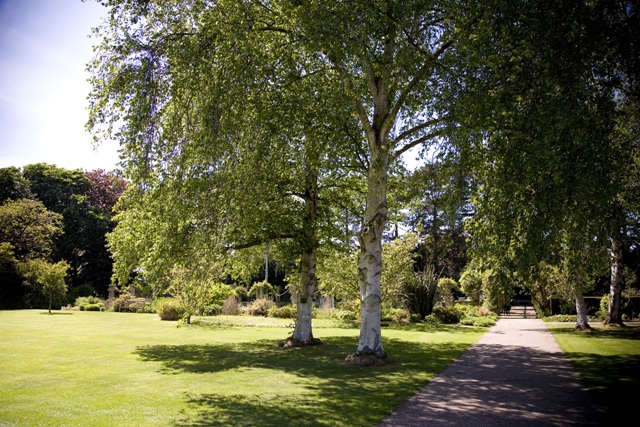Sep 4 2015
University of Leicester researchers show how trees benefit pedestrians in city environments
- Study examines trees in Leicester City
- Pollution levels for pedestrians reduced by seven per cent in city environment
- Highlights importance of trees in urban planning decisions
 Image shows trees on Victoria Park near the University of Leicester
Image shows trees on Victoria Park near the University of Leicester
Trees in cities throughout the UK could be significantly improving the quality of the air we breathe by decreasing pollution levels for pedestrians, researchers from the University of Leicester have revealed.
The team from the University of Leicester’s Department of Physics and Astronomy found that trees have a regionally beneficial impact by increasing turbulence and reducing ambient concentrations of road traffic emissions – by seven per cent in Leicester City at pedestrian height on average.
While previous studies have suggested that trees trap pollution by constructing wind flow in street canyons, the new study focuses on the effectiveness of trees at dispersing road traffic emissions on a city scale.
The study was supported by the Natural Environment Research Council (NERC), the University of Leicester and Bluesky International Ltd and is published in the journal Atmospheric Environment.
PhD researcher Antoine Jeanjean from the University of Leicester’s Department of Physics and Astronomy who led the research said: “Predicting the concentration of air pollutants is essential for monitoring air quality in cities. We focused the study on the city centre of Leicester where you have a high density of buildings and traffic.
“Our fears of trees trapping pollution around streets were revealed to be unfounded. In some situation they can increase pollution locally but on average their impact is beneficial in terms of pollutants dispersion.”
The study focused on the city of Leicester, where up to 90 per cent of some atmospheric pollutants such as NO2 are emitted by traffic.
The research team looked at ways trees could help to reduce air pollution in cities. To do this, they created a model with aerial mapping company Bluesky based on 3D representation of the city of Leicester with buildings, road and trees databases.
The study found that while trees reduced air quality in some street canyons in the city of Leicester by trapping pollution, they globally decrease the amount of pollutants around pedestrians within the city as a whole.
The researchers also found that while trees decrease the wind speed over the city, at the same time they produce more turbulence that helps in dispersing the pollution emitted by traffic, resulting in lower exposure for the public.
In addition to the increased dispersion of pollution by trees, there are also well known benefits of urban trees such as reduced stress, noise suppression and chemical and physical removal of certain pollutants.
Dr Roland Leigh from the University of Leicester’s Department of Physics and Astronomy and a member of the University’s Air Quality Group said: “The study highlights the importance of combining local and regional scale models for assessing the impact of trees in urban planning.”
James Eddy, Bluesky’s Technical Director and Industrial Associate at the University of Leicester added: “Basing this type of study on the most up to date and accurate geographic data, such as the National Tree Map, allows for the results to be validated and the studies replicated for other locations and types of environment further enhancing our understanding of air pollution and the important role played by trees.”
Leicester City Council provided the buildings map and the University of Leicester’s High Performance Computing services’ ALICE supercomputer was used to run the modelling. The Bluesky National Tree Map (NTM) product was used to represent the trees.
A video of Dr Roland Leigh discussing his research into air quality is available at: https://www.youtube.com/watch?v=MhM5M7vd4Dc
Images of pollution emitted by traffic over Leicester City and trees in the city available at: https://www.dropbox.com/sh/0cxd6r4b4h3x5bu/AAAndJ2OGpI2pY2xx3C0fdSta?dl=0